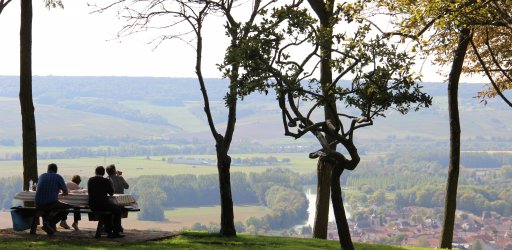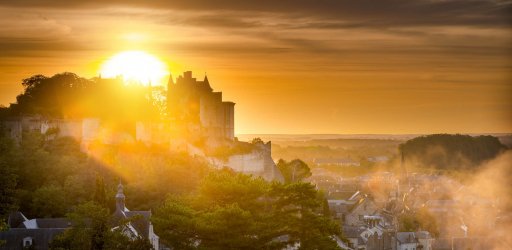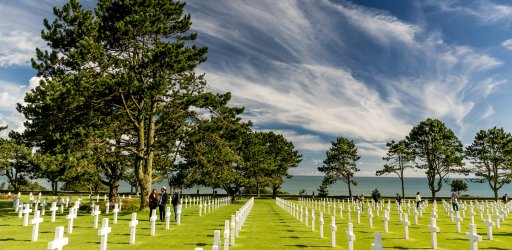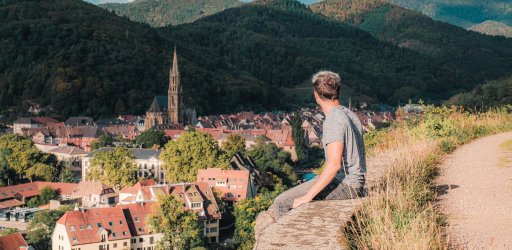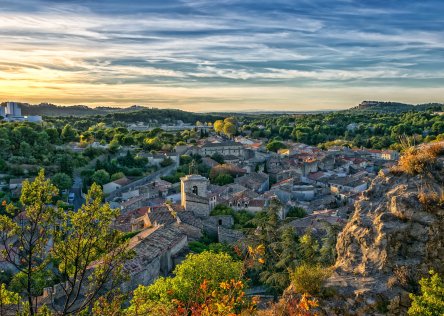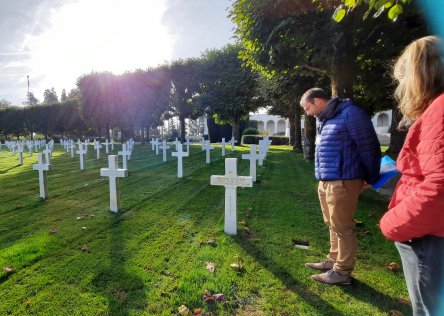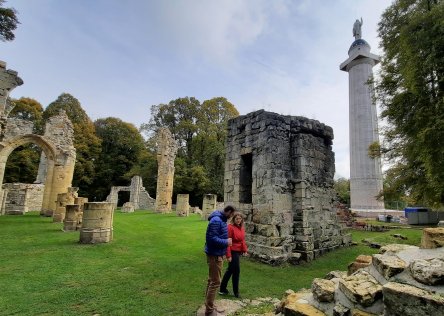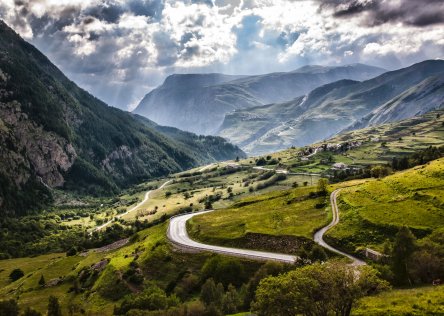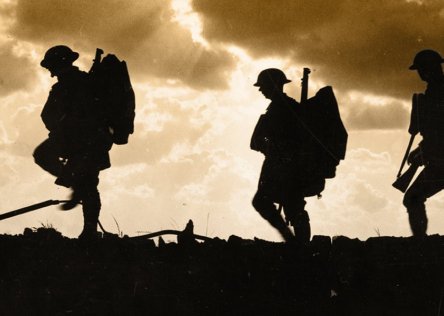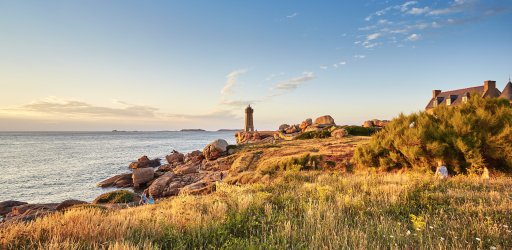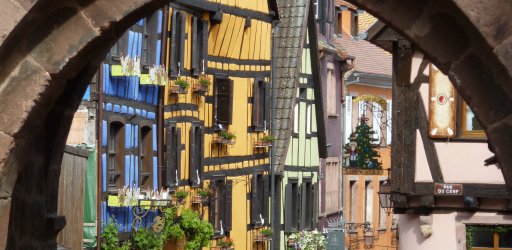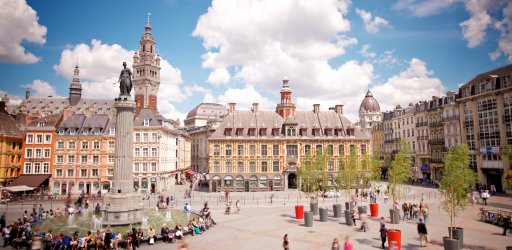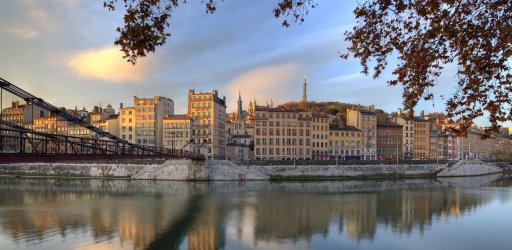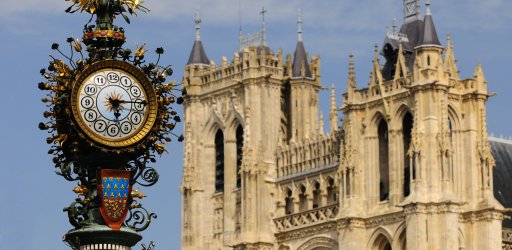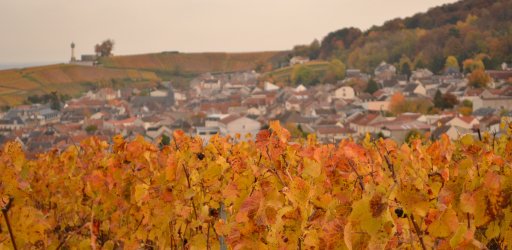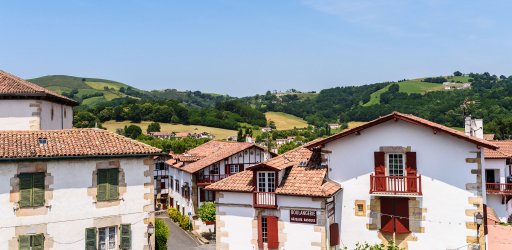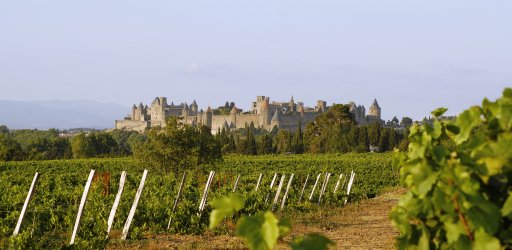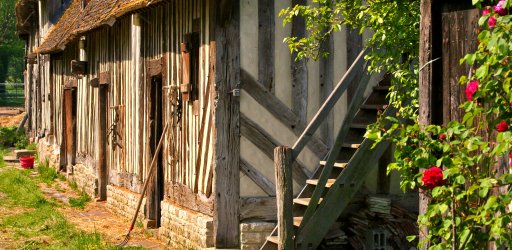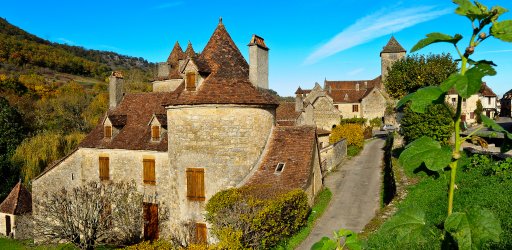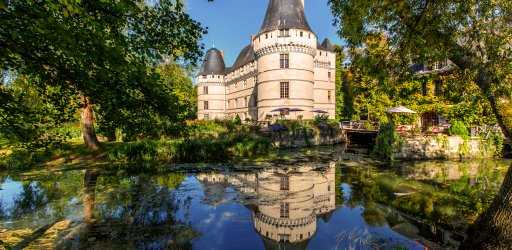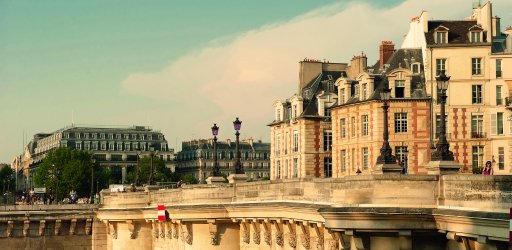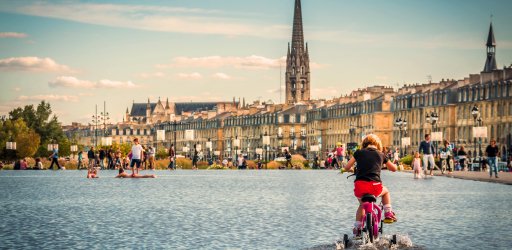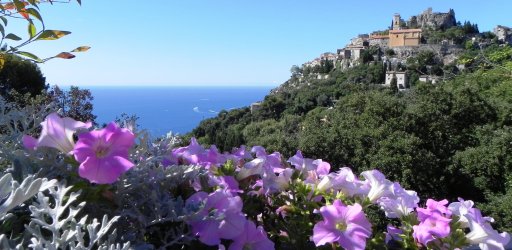Verdun - Meuse Region
The Verdun area has always played an important role in the conflicts in Europe throughout history, as it is located at the crossroad of France, Germany, Luxembourg and Belgium.
From Joan of Arc to the World War I battlefields in Argonne, Verdun and St Mihiel, from King Louis the XVIth & Marie-Antoinette’s attempted flight to the Prussian wars, you will probably be amazed by the rich history of the Verdun area.
Verdun is also famous for its gastronomy and the little town built around the amazing Cathedral and along the Meuse canal is lively and pleasant for a few days stay.
Our Self-Guided Tours in Verdun
Discover our self-drive trips to France including some time in Verdun.
How to Get to the Verdun area
Verdun is a 3hr drive from Paris and 2hr30 drive from CDG Airport. This is an easy drive on highways, and there are no main TGV high speed train lines to reach this part of France, so we do not recommend train travel to Verdun.
If you don’t feel like driving 2hr30 after landing to CDG Airport, you may also stop in Reims and the Champagne region, which is half-way between Paris and the Verdun area: a nice stop to get acquainted with French wines and then jump in World War I history in Verdun.
Tour the World War I sites around Verdun
While the Somme and the North regions of France have battlegrounds where soldiers from all over the world fought, the combats around Verdun involved mostly the French and the American troops for the allied forces.
-
Verdun Battlefields Tour with a Private guide
We have selected great English-speaking guides to take our travelers to visit Verdun's WWI battlefields today - this is highly recommended. On your own, you may not get the global overview and not fully understand what happened here between 1916 and 1918. A private guide allows you to fully immerse yourself, the time of the tour, into this exceptional period of time and history.
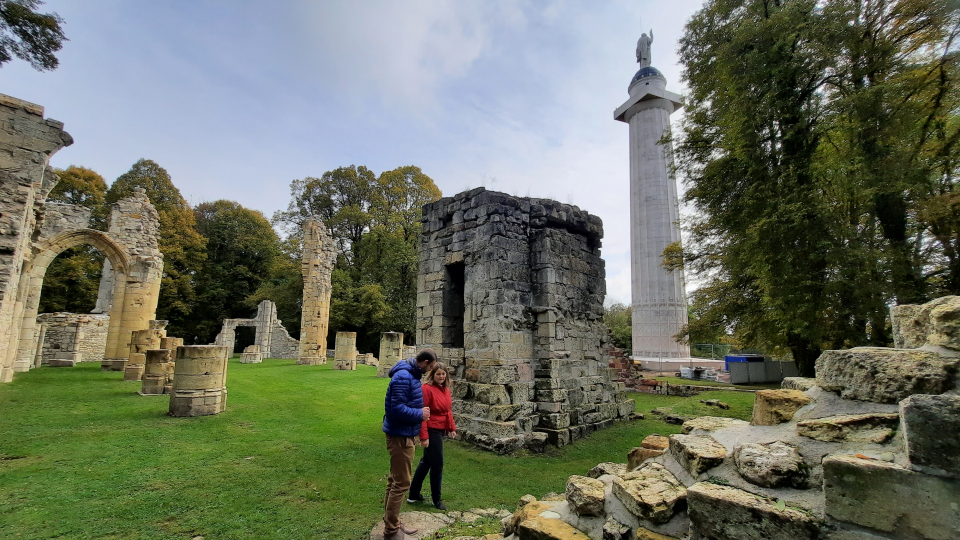
-
Find out about relatives / ancestors
We are very happy and very interested to plan a trip based on your family’s personal history. If you have an ancestor who fought, any piece of information you could supply will help us plan your Verdun battlefield tour based on this person’s history.
-
Verdun's Trenches & Shell holes
While most of us think about « trenches » in Verdun, be ready for shell holes too. Trenches were built in other battlefields in the region (today, they are mainly in the woods and you need a guide to find the most interesting ones). The Verdun battle was a battle of position and soldiers would jump from a shell hole to the next – fighting daily to gain one foot of terrain at a time.
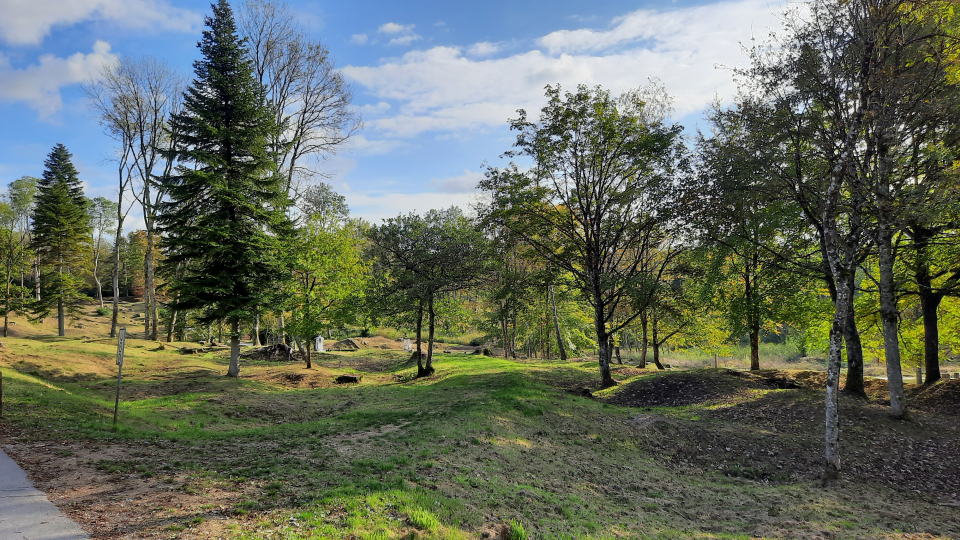
-
The Verdun Memorial
This museum is an absolute must-see. We are not too keen on recommending too many museums but this one is great: the scenography is very modern and keeps visitors interested. It really helps better understand what happened.
Verdun – Meuse World War I Battlefields and Memorials
There are plenty of sites to visit around Verdun and we mention here only the most visited by foreign travelers. However, we can always craft an itinerary to any other site, based on your wishes.
The Argonne Sites
The Argonne forest was a difficult area to win over. By late 1917, the battles had stopped here. It was only in 1918, with the arrival of the US troops, that this area was retaken from the German army.
-
Romagne Sous Montfaucon American Cemetery
This is the largest American War cemetery in Europe with over 14,246 soldiers buried here. This is a very moving place, with a peaceful chapel and a very informative visitor center.
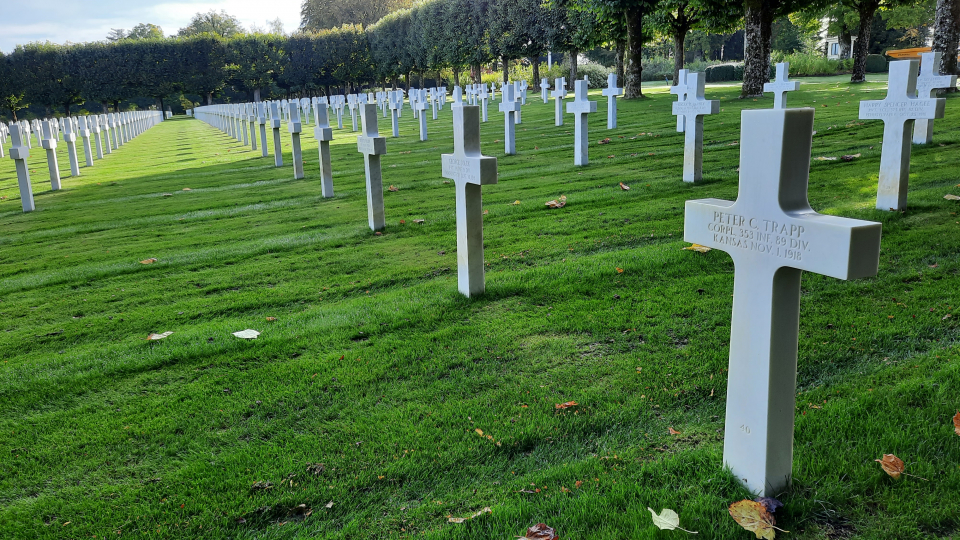
-
Montfaucon Memorial
It consists in a huge granite Doric column, topped with a statue symbolizing the angel of liberty. It commemorates the American victory during the Meuse-Argonne Offensive during the period from September 26, 1918, to November 11, 1918, when the American First Army forced the enemy to conduct a general retreat on this front.
Verdun Main Battlefield Sites
About a 10-minute drive East of the town of Verdun, you will reach the Douaumont area, which concentrates the most representative sites of the battle of Verdun.
-
Douaumont Ossuary & French cemetery
The ossuary should not be missed while visiting the area. The building was built by all the allied countries and pays respect to all the soldiers (including some Germain soldiers now) who died during WWI.
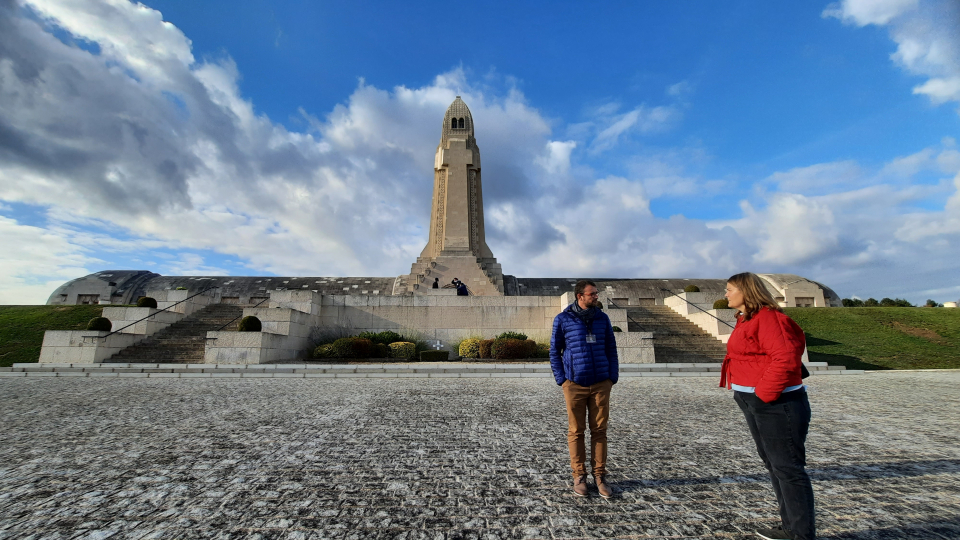
-
Fleury Devant Douaumont - a totally destroyed town
This town was so severely bombed that it was never rebuilt. There only remains holes on the ground and stones to remind us that there was a school, houses, a farm, a post office and a city hall.
Just down the road, you will find the Verdun Memorial Museum which is an absolute must-do to us.
-
Douaumont Fort
It was supposed to be one of the strongest fortifications to protect Verdun. It was however easily (and rather stupidly) taken by the German forces because of a miscommunication within the French army (officers were not expecting the Germans to attack there so quickly).
You can visit the inside of the fort and walk on the terrace outside and better understand the geography of the region: very hilly making the battles more difficult.
Saint Mihiel Salient – Montsec Memorial – South of Verdun
September 16, 1918: The St. Mihiel Salient was erased by more than 550,000 American and 110,000 French soldiers who fought in the offensive.
The Memorial commemorates the reduction of the St. Mihiel Salient by the U.S. First Army, September 12-16, 1918, and operations of the U.S. Second Army, November 9-11. It also honors the combat service of other U.S. divisions in this region and in Alsace and Lorraine.
If you want to get a better overview of the WWI Sites in France.
Also, while visiting Verdun…
You can taste the famous dragées de Verdun candies or some Mirabelle (small yellow plums) products: from the Mirabelle brandy to tarts or jam. Visit the place where they make and sell the famous Madeline de Commercy, little delicious cakes...or check out Emilie's Madeleine recipe with a short video.

Local Lorraine cheese are also worth a detour…if you like the smelly varieties.
Learn about the history of Joan of Arc in Vaucouleurs, where she was armed by the local count, only an hour and a half drive from Verdun.
Varennes in Argonne is a little town famous for an interesting historic story from the 18th century: King Louis the XVIth, Queen Marie-Antoinette and their family tried to escape in 1793 from the French Revolution but were recognized and arrested.
Where to stay in Verdun region
The main battlefields in the Verdun area are:
- The Argonne, located 30 minutes west of Verdun
- The Douaumont / Verdun battlefields, located 10 minutes from the town
- The Saint Mihiel area, with Montsec Memorial, located about 1 hour south of Verdun
For this reason, those who want to tour the entire area should stay in Verdun, which is central and easy to find restaurants, etc.
Those who have a special interest in specific battlefields can stay closer to Argonne or to Saint Mihiel.
We have selected comfortable and convenient accommodations to cover the entire Verdun region and will be happy to plan your stay according to your wishes.
FAQs about Verdun
Why is Verdun so important?
Verdun was the site of the longest battle of WWI. Both sides pursued a 'war of attrition' during the First World War. This meant fighting for prolonged periods of time through a series of small-scale actions, in an attempt to gradually wear down the other side. This policy led to huge numbers of casualties, and Verdun was a prime example of this. You can visit some of the WWI battlefields and see some of the former trenches and shell holes that still exist. We recommend doing this with a private guide, who can explain the full context of what happened there.
How many days do I need in Verdun?
We recommend staying for three nights, so that you can explore the town of Verdun, and visit the Cathedral and local bars, shops and restaurants. You can also visit the main war sites at Verdun and Argonne with a private guide, and taste some delicious local products - Verdun is well-known for its gastronomy. Why not try some of the local Côte de Meuse wine too?
If you only want to see the war sites, 2 nights will be enough.

